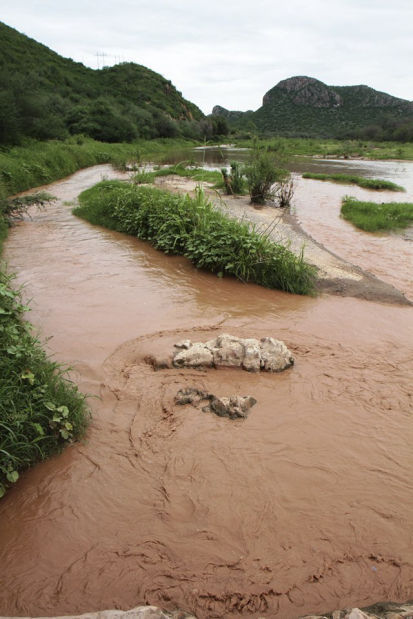A sulfuric acid spill from mining into the Sonora River south of the border by Naco has contaminated the drinking water supply for a string of towns in Sonora. It could be just the tip of the iceberg, say residents there.
The spill delayed the start of school Monday. It is not known when classes will begin for more than 5,000 students in the region.
The Associated Press reported that Mexican environmental authorities filed a lawsuit against the mining operation, Buenavista del Cobre. The agency has also ordered an inspection of all Buenavista’s properties to verify the company is complying with environmental laws.
On Aug. 7, about 10 million gallons of mining acid spilled into the Sonora River, which supplies Hermosillo — Sonora’s capital — and tens of thousands of residents in various towns with drinking water. Sonoran state officials said residents alerted authorities to the spill while Grupo México, the mine’s owner, did not notify the state.
Carlos Arias, director of civil defense for Sonora, told reporters the problem at the Buenavista property in Cananea was due to defects in newly built retaining ponds that hold the overflow of acids used to leach metal out of crushed rock.
Residents in Sonora are preparing a civil claim for damages against the conglomerate Grupo México. It also owns Tucson-based Asarco LLC, which operates the Mission mine near Sahuarita, the Silver Bell mine near Marana, the Ray mine near Kearny, and a smelter at Hayden.
Tucson attorney Jesus Romo, who also lives in Banámichi, one of the affected towns, said the spill portends potential future damage from larger tailing ponds near the river.
“If they burst, it can mean the end of people living along the river,” he said.
The tailing pond that broke was more then 1.4 million cubic feet (40,000 cubic meters), but the others have have billions of cubic feet, he said.
Romo said preparing the civil suit will take time since the environmental and economic damage will have to be determined.
The Sonoran government announced Monday that it has provided about $38,000 to each of the seven municipalities affected by the spill: Arizpe, Banámichi, San Felipe de Jesús, Baviácora, Aconchi, Ures and Hermosillo.
The national coordinator of civil protection, Luis Felipe Puente, said the National Water Commission (Conagua) conducted one of three tests to determine water quality. He said contamination levels are gradually declining, thanks in part to recent rains. The second test is scheduled for Friday, and the third is unscheduled.
The company has the responsibility to mitigate the spill, Puente said.
Since the spill, Conagua has ordered the closure of all wells along the river.
The townspeople have been surviving on potable water provided by the mine, the state government and donations from across Sonora. But the supply of information to residents has been lacking.
On Monday, Dora Bravo, of Ures, said by phone that several hundred area residents had attended a meeting with state and federal officials in which their questions went unanswered.
“We were told that the wells are not contaminated,” said Bravo, 38. “And if they are not contaminated, why have they turned off the pumps? But they did not even let us speak. They said they were in a hurry, and would have another meeting tomorrow.”
Each family was told it would receive three gallons of water a day, “but at noon today, we have not been given any water,” Bravo said. “We cannot wash clothes, and are we supposed to bathe using purified water?”
Bravo’s family lives off the cheese and other products her husband sells in Hermosillo. “But people do not want to buy anything that comes from here, which we understand,” she said.
Armida Maldonado, of Aconchi, said, “Most people think it is only a momentary lack of water, when in fact it is worse. It will affect the whole economy of the region.”
Romo said there was a major spill in 1985, also caused by the Cananea mine.
“This is a warning that we are taking very seriously. It is an ecological disaster,” he said. “If they do nothing, everything will die here.”





